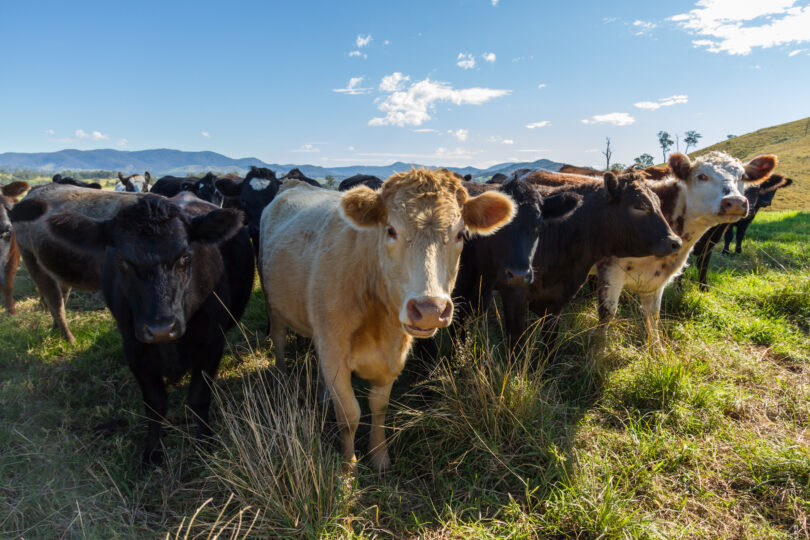The agriculture industry is uniquely placed in the climate change and net zero conversations. It’s one of the biggest emitting sectors in the country, while also being one of the most vulnerable to the impacts of climate change.
Yet unlike other heavy emitting sectors like energy and transport, where lower emissions technologies are becoming increasingly viable and are already being implemented, there are currently few easily available substitutes in the agriculture industry to reduce emissions.
In 2019 the sector was responsible for 15 per cent of the nation’s total emissions, emitting 76.5 million tonnes of greenhouse gases into the atmosphere.
James Ha from the Grattan Institute, whose recent report Towards Net Zero details the importance of achieving net zero in the agriculture industry, says that reducing emissions in the sector will be challenging but essential in order for Australia to minimise it’s contribution to climate change.
“The animal emissions in the sector alone are 60 million tonnes today, and those are the most difficult emissions to get rid of,” Ha said.
Most of these emissions come from methane which comes from the gut of ruminant animals like cattle and sheep in a process called enteric fermentation, accounting for 60 per cent of total emissions in the sector.
There are trials underway of different feed supplements and vaccines that can be given to animals to reduce the amount of methane they produce, the most promising of these supplements showing up to 90 per cent decreases in methane emissions.
“The challenge is in making sure that these supplements get into the animals every day, and that’s really hard because the vast majority of cattle in Australia are grazing, they’re not somewhere where we can control their diet every day,” Ha said.
Even with significant developments in reducing methane emissions in livestock, as well as improvements in other areas that can reduce emissions such as increases in land use efficiency, increased quality of feed, and switching to lower emissions farm machinery, it’s likely that the sector will still be a large emitter by 2050 and will need to rely on carbon offsetting to deliver on net zero targets.
The need for these emissions reducing technologies and offsetting solutions will be especially important as livestock numbers are projected increase as long-lasting drought conditions improve and global demand for meat continues to rise.
As livestock numbers are a key driver of emissions, raising fewer emissions-intensive animals is one way that these emissions could be reduced.
If the number of livestock produced were to fall, alternative forms of protein would be needed to fill their place to meet growing demand for protein globally.
Researchers at the University of Sydney are working on a program to develop a plant-based protein industry in Australia, which would see pulses grown in Australia used in food production, much like soybean and yellow currently are in other parts of the world.
“We grow six different types of pulses, majority of those pulses haven’t been set up for a protein-based food industry, so we need to figure out how best to take Australian grown pulses and process them into food that meets consumer needs and want,” said lead researcher Professor Brent Kaiser.
Beyond creating more market opportunities for primary producers of these crops in Australia, one of the main drivers behind this research is the increasing demand for protein around the world.
“There is an impeding global shortage of dietary protein on the planet. By 2050, we’ll need probably another 45 per cent more protein on the planet than we currently have now,” said Professor Kaiser.
While the research does aim to develop and provide alternative protein sources to meat, Professor Kaiser it is not opposed to livestock farming.
“We’re not really competing with the animal market, we’re complimentary to it,” said Professor Kaiser.
He says that demand for protein is so high that both animal and plant-based proteins will play a crucial part in meeting this demand.
Also on the horizon and offering an alternative to conventionally farmed meat is cultured meat.
The industry is growing around the world however the technology is still in its infancy and a commercially industry in Australia will take time to establish.
Spokesperson for Cellular Agriculture Australia Ruth Pearson said that as well as providing a product that is competitive on price and taste with traditional meat, the industry also needs to ensure it’s using systems and processes that make it less energy intensive and more climate friendly than conventional farming.
“It’s not inevitable that cell cultured meat will have a reduced carbon footprint. It’s not inherently built into the system, it’s something that will have to be actively ensured,” said Ms Pearson.
Ha says that while it’s not immediately apparent what the long-term future for animal-based meat and dairy products is going to be, producers and the Australian government should hedge their bets and get to work on reducing emissions.
“If there’s an alternative product out there that is low emissions and that consumers will want, then it’s incumbent on Australian producers to try and make sure that their products are as low emissions as possible so that they can be competitive in the global market.”
(Featured Image: “Until the Cows Come Home” by Marc Dalmulder is licensed by CC BY 2.0)


